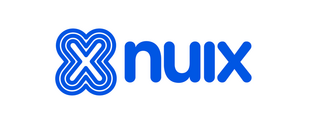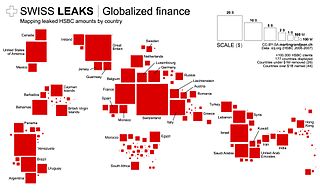A spatial database is a general-purpose database that has been enhanced to include spatial data that represents objects defined in a geometric space, along with tools for querying and analyzing such data.
Ontotext is a software company with offices in Europe and USA. It is the semantic technology branch of Sirma Group. Its main domain of activity is the development of software based on the Semantic Web languages and standards, in particular RDF, OWL and SPARQL. Ontotext is best known for the Ontotext GraphDB semantic graph database engine. Another major business line is the development of enterprise knowledge management and analytics systems that involve big knowledge graphs. Those systems are developed on top of the Ontotext Platform that builds on top of GraphDB capabilities for text mining using big knowledge graphs.
Gerard Ryle is an Irish-Australian investigative reporter who has written on subjects including politics, financial and medical scandals, and police corruption. From 2011, he has been director of the International Consortium of Investigative Journalists, which has published research on international tax evasion and money laundering, citing the leaked Panama Papers, Paradise Papers and Pandora Papers.
A graph database (GDB) is a database that uses graph structures for semantic queries with nodes, edges, and properties to represent and store data. A key concept of the system is the graph. The graph relates the data items in the store to a collection of nodes and edges, the edges representing the relationships between the nodes. The relationships allow data in the store to be linked together directly and, in many cases, retrieved with one operation. Graph databases hold the relationships between data as a priority. Querying relationships is fast because they are perpetually stored in the database. Relationships can be intuitively visualized using graph databases, making them useful for heavily inter-connected data.
Redis is a source-available, in-memory storage, used as a distributed, in-memory key–value database, cache and message broker, with optional durability. Because it holds all data in memory and because of its design, Redis offers low-latency reads and writes, making it particularly suitable for use cases that require a cache. Redis is the most popular NoSQL database, and one of the most popular databases overall. Redis is used in companies like Twitter, Airbnb, Tinder, Yahoo, Adobe, Hulu, Amazon and OpenAI.

Neo4j is a graph database management system (GDBMS) developed by Neo4j, Inc.
FlockDB was an open-source distributed, fault-tolerant graph database for managing wide but shallow network graphs. It was initially used by Twitter to store relationships between users, e.g. followings and favorites. FlockDB differs from other graph databases, e.g. Neo4j in that it was not designed for multi-hop graph traversal but rather for rapid set operations, not unlike the primary use-case for Redis sets. FlockDB was posted on GitHub shortly after Twitter released its Gizzard framework, which it used to query the FlockDB distributed datastore. The database is licensed under the Apache License.

Nuix Ltd is an Australian technology company that produces investigative analytics and intelligence software for extracting knowledge from unstructured data. The applications of the company's technology reportedly include digital forensics, financial crime, insider investigations, data privacy, data governance, eDiscovery and regulatory compliance. As of December 2020, the company's software was reportedly used by 1000 customers in 79 countries. The company has its headquarters in Sydney, Australia, with offices in Asia, Europe, the Middle East and North America.
The International Consortium of Investigative Journalists, Inc. (ICIJ), is an independent global network of 280 investigative journalists and over 140 media organizations spanning more than 100 countries. It is based in Washington, D.C., with personnel in Australia, France, Spain, Hungary, Serbia, Belgium and Ireland.

Offshore Leaks is a report disclosing details of 130,000 offshore accounts that came out in April 2013. Some observers have called it the biggest hit against international tax fraud of all times, although it has been pointed out that normal businesses may use the offshore legislation to ease formalities in international trade.

Redis Ltd. is an Israeli private computer software company headquartered in Mountain View, California. Redis is the sponsor of the source-available in-memory NoSQL database of the same name and the provider of Redis Enterprise software, cloud services, and tools for global companies. The company’s research and development center is based in Tel Aviv and it has additional offices in London, Austin, and Bengaluru.

Swiss Leaks is a journalistic investigation, released in February 2015, of a giant tax evasion scheme allegedly operated with the knowledge and encouragement of the British multinational bank HSBC via its Swiss subsidiary, HSBC Private Bank (Suisse). Triggered by leaked information from French computer analyst Hervé Falciani on accounts held by over 100,000 clients and 20,000 offshore companies with HSBC in Geneva, the disclosed information was then called "the biggest leak in Swiss banking history".

The Panama Papers are 11.5 million leaked documents that were published beginning on April 3, 2016. The papers detail financial and attorney–client information for more than 214,488 offshore entities. The documents, some dating back to the 1970s, were created by, and taken from, former Panamanian offshore law firm and corporate service provider Mossack Fonseca, and compiled with similar leaks into a searchable database.
This article lists some of the reactions and responses from countries and other official bodies regarding the leak of legal documents related to offshore tax havens from the law firm Mossack Fonseca, called the Panama Papers.

The Paradise Papers are a set of over 13.4 million confidential electronic documents relating to offshore investments that were leaked to the German reporters Frederik Obermaier and Bastian Obermayer, from the newspaper Süddeutsche Zeitung. The newspaper shared them with the International Consortium of Investigative Journalists, and a network of more than 380 journalists. Some of the details were made public on 5 November 2017 and stories are still being released.
The Bahama Leaks are 1.3 million internal files from the company register of the Bahamas. After the release of the Panama Papers in 2016, an unknown source handed over internal data from the national corporate registry of the Bahamas to Frederik Obermaier and Bastian Obermayer, who analyzed them with the help of the International Consortium of Investigative Journalists (ICIJ). At the same time, ICIJ, Süddeutsche Zeitung and other media partners published detailed reporting before they published an online database of offshore entities.

The Panama Papers are 11.5 million leaked documents that detail financial and attorney–client information for more than 214,488 offshore entities. The documents, some dating back to the 1970s, were created by, and taken from, Panamanian law firm and corporate service provider Mossack Fonseca, and were leaked in 2015 by an anonymous source.

The Panama Papers are 11.5 million leaked documents that detail financial and attorney–client information for more than 214,488 offshore entities. The files were uncovered and exposed by the International Consortium of Investigative Journalists, the German newspaper Süddeutsche Zeitung and other news organizations. The documents, some dating back to the 1970s, were created by, and taken from, Panamanian law firm and corporate service provider Mossack Fonseca, and were leaked in 2015 by an anonymous source.

The Pandora Papers are 11.9 million leaked documents with 2.9 terabytes of data that the International Consortium of Investigative Journalists (ICIJ) published beginning on 3 October 2021. The leak exposed the secret offshore accounts of 35 world leaders, including current and former presidents, prime ministers, and heads of state as well as more than 100 business leaders, billionaires, and celebrities. The news organizations of the ICIJ described the document leak as their most expansive exposé of financial secrecy yet, containing documents, images, emails and spreadsheets from 14 financial service companies, in nations including Panama, Switzerland and the United Arab Emirates. The size of the leak surpassed their previous release of the Panama Papers in 2016, which had 11.5 million confidential documents and 2.6 terabytes of data. The ICIJ said it is not identifying its source for the documents.

Valkey is an open-source in-memory storage, used as a distributed, in-memory key–value database, cache and message broker, with optional durability. Because it holds all data in memory and because of its design, Valkey offers low-latency reads and writes, making it particularly suitable for use cases that require a cache. Valkey is the successor to Redis, the most popular NoSQL database, and one of the most popular databases overall. Valkey or its predecessor Redis are used in companies like Twitter, Airbnb, Tinder, Yahoo, Adobe, Hulu, Amazon and OpenAI.








